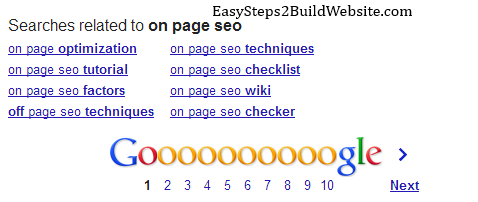SEO is a dynamic field. How many updates do you think Google and other search engines have rolled out in the past few years?
Hundreds of them.
You may remember a few big ones, such as Google Panda, Google Penguin, and the more recent Google Hummingbird update. However, it is the nature of search engines to keep updating their algorithms and ranking factors.
Because of all those constant updates and the evolution of SEO and digital marketing tactics, the dynamics of search engine optimization have changed quite a bit. If you are trying to rank your blog posts on Google’s top pages, you should know a few things that almost always work. It gives you a definite edge over your competitors.
This blog is sort of an SEO cheat sheet. It contains numerous tips, tricks, and modern SEO tactics that you should know of. Use this article as a guide whenever you are struggling to optimize your blog post. Bookmark it, print it out, or paste it on your office board. It is a handy resource that will keep helping you.
So, let’s mention all the most common tips and tricks that work in today’s modern SEO world.
Tip #1: Search Engines Prefer In-Depth Content
If you are still churning out 300-word blog posts, you might not be able to breach the Google’s 1st page with them. Those days are long gone. It is very, very difficult to rank a 300-word blog post on Google’s 1st page — unless you are Seth Godin!
Let me explain why.
You see, just as you are competing with your business competitors, search engines are also competing with other search engines. For example, Google is always competing against Bing and Yahoo. If Google’s search engine results fail to fulfill the requirements of its users, people will jump off to using Bing or Yahoo or any other search engine. This is why search engines have made it their priority to present the best, most useful content on the top. And they have made the length of a blog post one of the important measuring factors to judge its usefulness.
Internet users are busy people. They don’t want to open and read eight different pages to find the information they’re looking for. They want as much information as possible by visiting the least amount of pages. In other words, they want in-depth and comprehensive content on the 1st pages of search engines.
SerpIQ recently did a research on it. They concluded that the average length of web pages that are ranked on Google’s 1st pages had an average of at least 2000 words. In other words, none of the blog posts that were ranked on Google’s 1st page had less than 2000 words in them. And that research used 20,000 different keywords, so it was a big enough sample.
So, the takeaway is to create more comprehensive and in-depth content. It will help you getting ranked on Google’s 1st pages. Ideally, your blog posts should have more than 2,000 words.
Tip #2: Website Loading Speed

For the same reason mentioned above, search engines don’t want to rank websites that load awfully slow.
It would be a very bad experience for a search engine user to open a website and wait for 15 seconds to find the information. This is why the loading speed of a website is now an official search engine ranking factor.
Ideally, your website should not take more than 2 seconds to load. If it is taking more than that, you must do something about it.
There are many tweaks you can make to make your website load faster. Here are a few resources for you that will help in this regard.
By the way, do you know how long is it taking for your website to load? Here is a couple of tools that can help you calculate that. Simply insert the URL of your website, and it will show you long your website takes to open.
Tip #3: Pursue Long-Tail Keywords
Competition in the content marketing world is tougher than ever. As more and more businesses realize the power of content marketing, they are publishing a lot more blog posts and other types of digital contents for the web-users.
How can you compete with such a huge flood of content?
The idea is to take the road less traveled. Long-tail keywords can give you a way to rank much higher in the search engines that you would have otherwise. As only a handful of website owners actively pursue these long-tail keywords, you always have a better chance to rank for these.
Another benefit of using this strategy is that long-tail keywords have the best conversion rates.
I have already written about long-tail keywords in quite some detail. Following is a link to your article. It explains what long-tail keywords are, why should you pursue them, and how to integrate long-tail keywords in your blog posts.
How to integrate long-tail keywords in blog posts?
Tip #4: Title Tags
Title tags are still important in the modern SEO world. They will stay the same, no matter how much anyone tells you otherwise.
In simple words, the Title Tag is basically the title of your blog post. It appears on the search engine to display the preview snippet of your web page. There are a few things you need to learn about Title Tags.
A good title tag is interesting but short and concise.
It should not have more than 55 characters.
It should have the primary keyword in it.
Tip #5: Don’t Ignore the Meta Description
Do you pay enough attention to Meta Description? If your answer is no, you are missing out on something big.
According to a research by Survey Monkey, approximately 43% people click on a web page based on the meta description alone.
There are two major benefits and purposes of a good Meta Description:
It is the Meta Description that the search engines use to understand the context of your web page. Moreover, after understanding what your content is about, search engines present your web page to its right target audience.
Secondly, Meta Description plays an important part in the user’s decision as to which web page should be clicked. In other words, a descriptive, targeted, and well-created Meta Description brings more clicks from search engines.
Your Meta Description should not be more than 160 characters, or the search engines will cut the rest of it.
Tip #6: LSI Keywords
LSI Keywords are important. They help search engines understand the exact context of your blog posts. Moreover, with the introduction of so many keywords that although spell the same but have different meanings, these LSI keywords present your contents to the right audience.
Apart from that, LSI keywords also help you avoid the problem of over-optimization. This is important because if you over-optimize for a keyword, it may lead to a penalty by Google and other search engines.
You can see such LSI keywords all around you on the web. For instance, see the following suggestions that Google itself provides the searcher. It is another example of possible LSI keywords.

To find more information about LSI keywords, how to find them, and how to use them in your blog posts the right way, read the following article that I’ve written on this very topic.
LSI: The Perfect Solution to Over-Optimization of Keywords
Tip #7: A Mobile-Optimized Website
If your website is not mobile-friendly, search engines won’t rank its web pages on their first pages. It’s as simple as that.
Why? This is because search engines have realized that more than 50% of traffic comes from mobile devices, smartphones, and tablets. So why bother ranking and showing a website on the first page when it is not even compatible with the user’s device? There is no point of that.
Furthermore, Google has announced its own mobile-friendly algorithm on April 21, 2015. Bing’s new mobile algorithm is also being rolled out. And it’s going to be the same for every other search engine as well.
There is just no other option than having a mobile-friendly website.
Final Words
So these are the 7 things you must know about modern-day SEO. If you want your blog posts to be able to rank on Google’s 1st page, these are the ways.
Given said that you’ll have to understand that SEO is a very dynamic field. It is just a matter of one big update, and new SEO tactics, tips, and tricks surface on the web. So stay tuned and keep an eye out on any new update that the search engines roll out. In the meanwhile, these 7 tips and tricks will help you rank those blog posts on the first pages of search engines.
